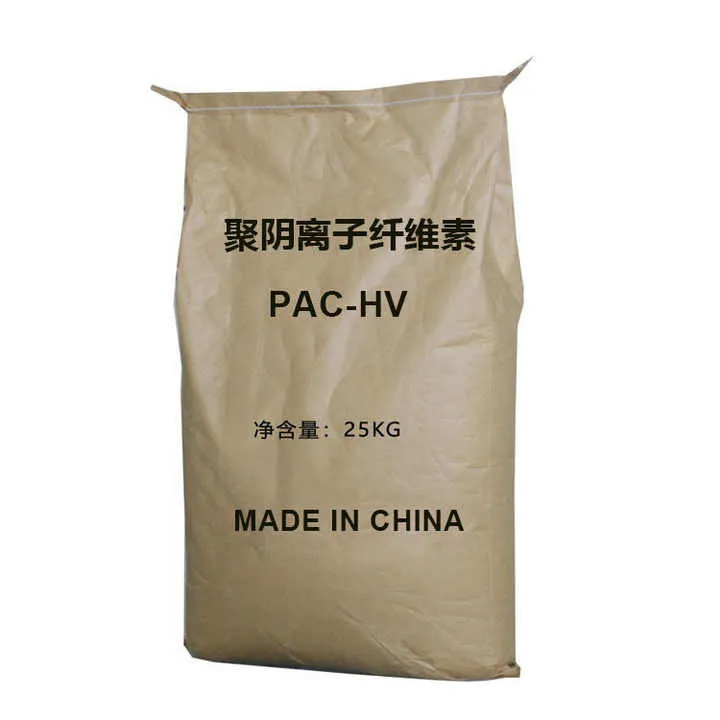
Poly Anioniccellulose (PAC) Filtration Control, High Purity
Poly Anioniccellulose (PAC): the quiet workhorse keeping drilling fluids honest
I’ve walked enough mud pits and QC labs to know a dependable polymer when I see one. Poly Anioniccellulose (PAC) is one of those products that rarely makes headlines—but operators notice when it’s missing. It’s a water‑soluble cellulose ether (usually the sodium salt) that behaves beautifully in brines, from inland salt wells to hard offshore duty. White to light-yellow, free-flowing, odorless. In practice, it just…works.

What’s trending (and why it matters)
- Salinity resilience: more brine-heavy programs; Poly Anioniccellulose (PAC) keeps viscosity predictable and cuts API fluid loss even in 10–20% NaCl.
- Offshore reliability: fewer unplanned pills, better filter cake—crews like fewer surprises, to be honest.
- Cleaner chemistries: non-toxic, RoHS/REACH-friendly options; HSE teams are happier.
- Geothermal and HP/HT: stability to around 120–150°C, depending on grade, is becoming a baseline ask.
Technical snapshot and typical specs
Two workhorse grades dominate: LV (low viscosity) for tight filtration control without thickening the whole system, and HV (high viscosity) for carrying capacity. Real-world use may vary—mud systems are quirky.
| Parameter | PAC-LV | PAC-HV | Test method |
|---|---|---|---|
| Appearance | White–light yellow powder | White–light yellow powder | Visual |
| Degree of substitution (DS) | ≈0.85–1.2 | ≈0.85–1.2 | Titrimetric |
| Moisture | ≤10% | ≤10% | Oven, 105°C |
| Brookfield viscosity (1% sol, 25°C) | ≈50–100 mPa·s | ≈400–1200 mPa·s | API RP 13B‑1 |
| Fluid-loss reduction (4% NaCl mud) | ΔFL ≥40% vs. base | ΔFL ≥50% vs. base | API 13B‑1 (API filter press) |
| pH (1% solution) | 6.5–8.5 | 6.5–8.5 | pH meter |
How it’s made (quick process flow)
Materials: refined cellulose pulp → alkalization with NaOH (alkali cellulose) → etherification with monochloroacetic acid/sodium monochloroacetate → neutralization → washing (salt removal) → drying → milling and sieving. QA locks in DS, purity, and particle size.
Testing standards: API Spec 13A (drilling-grade PAC), API RP 13B‑1 for mud testing; some labs also mirror ISO 13500. Service life: ≈24 months in sealed, dry storage; in active mud, performance remains stable across multiple recirculation cycles, typically up to ~120–150°C depending on grade and salts.
Where it shines
- Oil and gas: saltwater and seawater drilling fluids; thin, slick filter cake; better rate of penetration.
- Geothermal: thermal resilience with sensible rheology control.
- Industrial fluids: brine-based workover/completion fluids, mining slurries, and even some construction grouts.
Advantages users mention: fast hydration in cold or hot water, strong salt/calcium tolerance, and—surprisingly—clean equipment thanks to fewer sticky residues.

Vendor landscape (real-world view)
| Vendor | Grades | Salt tolerance | Lead time | Certs | MOQ | Customization | Typical price |
|---|---|---|---|---|---|---|---|
| Tangzhi (Origin: Room 2308, Dongsheng Plaza 2, No. 508 Zhongshan East Road, Chang’an District, Shijiazhuang, Hebei, China) | PAC‑LV, PAC‑HV | Saturated NaCl, good Ca²⁺ resistance | ≈7–15 days | ISO 9001/14001, REACH; API 13A compliant | ≈1 MT | DS, particle size, viscosity | Mid-range, volume discounts |
| Regional blender | LV only | Moderate | ≈3–4 weeks | ISO 9001 | ≈500 kg | Limited | Budget |
| Offshore specialist | LV/HV + brine packages | High, multivalent tolerant | Stock in hubs | ISO 9001, API Q1 | ≈1 MT | Extensive | Premium |
Customization and QC
Common tweaks: dial the DS for salt tolerance, tune particle size for dispersibility, and set viscosity windows for LV/HV blends. QC typically includes moisture, DS, 1% solution viscosity, purity (chloride/ash), pH, and API fluid-loss in reference brine. Several customers tell me they want COAs plus third‑party SGS checks—fair request.
Field notes (short cases)
- Onshore salt well, 4% NaCl: swapping to Poly Anioniccellulose (PAC)-LV cut API fluid loss from 18 mL to 9–10 mL; torque variability dropped noticeably.
- Offshore brine system: HV grade at 0.5–0.8 lb/bbl boosted hole cleaning without over-thickening; the night company man literally said “less stuck-pipe drama.”
- Geothermal pilot: mixed-brine mud maintained FL control after multiple heat cycles around 135°C—imperfect, but stable enough to finish the section.
Certifications and compliance: ISO 9001/14001, REACH ready; products align with API Spec 13A. Typical shelf life: ≈24 months (sealed, dry,
References
- API Specification 13A: Drilling Fluids Materials, American Petroleum Institute. https://www.api.org
- API Recommended Practice 13B-1: Field Testing Water-Based Drilling Fluids. https://www.api.org
- ISO 13500: Petroleum and natural gas industries — Drilling fluid materials. https://www.iso.org
- OnePetro technical papers on PAC performance in saline drilling fluids. https://www.onepetro.org
-
Reliable Powdered Cellulose Supplier: Quality, Sustainability & InnovationNewsNov.24,2025
-
Find Trusted Microfibrillated Cellulose Suppliers for Sustainable Industrial SolutionsNewsNov.24,2025
-
Leading Methocel Suppliers: Quality, Innovation & Sustainability in Methylcellulose SupplyNewsNov.23,2025
-
Reliable Hydroxyethylcellulose Suppliers for Industry & Sustainability | Tangzhi HPMCNewsNov.23,2025
-
Top Ethyl Cellulose Supplier – Quality, Sustainability, and Industrial SupportNewsNov.23,2025
-
Trusted CMC Powder Suppliers for Food, Pharma & Industrial Use | Tangzhi HPMCNewsNov.22,2025





















